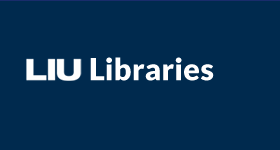Extraction and Quantification of Vitamin C in Papaya Using Iodometric Titration
Faculty Mentor
Cheng Zhang
Major/Area of Research
Chemistry (Health Science)
Description
INTRODUCTION: Vitamin C (ascorbic acid) is a key antioxidant, and an essential nutrient found in various fruits, with papaya (Carica papaya) being a significant dietary source. Accurate quantification of vitamin C is crucial for assessing its nutritional value and ensuring food quality. This study focuses on the extraction and determination of vitamin C in papaya using the iodometric titration method, a reliable redox-based technique.
METHOD: Papaya samples were subjected to different extraction solvents, including metaphosphoric acid, oxalic acid, and citric acid solutions, to enhance ascorbic acid stability and minimize oxidative degradation. The extracted vitamin C was then quantified using iodometric titration, where iodine served as the oxidizing agent, and starch was used as an endpoint indicator. The impact of extraction conditions, titration parameters, and sample preparation on the accuracy and precision of vitamin C determination was systematically analyzed.
CONCLUSIONS: Preliminary findings indicate that metaphosphoric acid extraction resulted in the highest vitamin C recovery, preserving ascorbic acid integrity. The iodometric titration method was found to be a cost-effective and reproducible approach for quantifying vitamin C in papaya. These results highlight the importance of optimizing extraction protocols to improve the reliability of vitamin C determination for food quality control and nutritional studies.
Extraction and Quantification of Vitamin C in Papaya Using Iodometric Titration
INTRODUCTION: Vitamin C (ascorbic acid) is a key antioxidant, and an essential nutrient found in various fruits, with papaya (Carica papaya) being a significant dietary source. Accurate quantification of vitamin C is crucial for assessing its nutritional value and ensuring food quality. This study focuses on the extraction and determination of vitamin C in papaya using the iodometric titration method, a reliable redox-based technique.
METHOD: Papaya samples were subjected to different extraction solvents, including metaphosphoric acid, oxalic acid, and citric acid solutions, to enhance ascorbic acid stability and minimize oxidative degradation. The extracted vitamin C was then quantified using iodometric titration, where iodine served as the oxidizing agent, and starch was used as an endpoint indicator. The impact of extraction conditions, titration parameters, and sample preparation on the accuracy and precision of vitamin C determination was systematically analyzed.
CONCLUSIONS: Preliminary findings indicate that metaphosphoric acid extraction resulted in the highest vitamin C recovery, preserving ascorbic acid integrity. The iodometric titration method was found to be a cost-effective and reproducible approach for quantifying vitamin C in papaya. These results highlight the importance of optimizing extraction protocols to improve the reliability of vitamin C determination for food quality control and nutritional studies.

